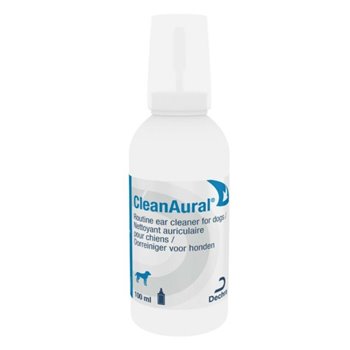
CleanAural Ear Cleaner for Dogs - 100ml
Cleanaural is a highly recommended ear cleaner with cerumolytic agents to break down wax and clean your pets ears

Ear Mites in Dogs
Ear mites are a common cause of ear irritation in dogs. These microscopic parasites live on the surface of the skin, particularly inside the ears, where they feed on ear wax, oils, and skin debris. They can cause considerable discomfort and are highly contagious between animals.
The most common type of ear mite found in dogs is Otodectes cynotis. Although they are tiny and not visible to the naked eye, their presence can lead to noticeable symptoms. If left untreated, ear mites can cause inflammation, infection, and long-term damage to the ear canal.
Ear mites are most often seen in puppies and young dogs, but dogs of any age can become infested. They can also spread between dogs and other animals, including cats, particularly in multi-pet households. Early recognition and treatment are important to prevent complications.
What Are Ear Mites?
Ear mites are external parasites that live on the sk...
Ear Mites in Dogs
Ear mites are a common cause of ear irritation in dogs. These microscopic parasites live on the surface of the skin, particularly inside the ears, where they feed on ear wax, oils, and skin debris. They can cause considerable discomfort and are highly contagious between animals.
The most common type of ear mite found in dogs is Otodectes cynotis. Although they are tiny and not visible to the naked eye, their presence can lead to noticeable symptoms. If left untreated, ear mites can cause inflammation, infection, and long-term damage to the ear canal.
Ear mites are most often seen in puppies and young dogs, but dogs of any age can become infested. They can also spread between dogs and other animals, including cats, particularly in multi-pet households. Early recognition and treatment are important to prevent complications.
What Are Ear Mites?
Ear mites are external parasites that live on the skin’s surface. In dogs, they usually inhabit the ear canal but may also be found on surrounding areas such as the head, neck, or tail. These mites are barely larger than a grain of sand and have eight legs once they reach maturity.
The life cycle of an ear mite lasts around three weeks. It includes several stages: egg, larva, nymph, and adult. Adult mites mate and lay eggs inside the ear canal. These eggs hatch into larvae, which develop into nymphs and finally mature into adults. The entire process takes place on the host animal.
Ear mites do not burrow into the skin but live on its surface. They feed on oils and skin debris and trigger an allergic-type reaction in many dogs. This results in irritation, itching, and inflammation. The mites themselves are usually not harmful in small numbers, but their presence often leads to secondary problems.
How Dogs Get Ear Mites
Ear mites are highly contagious and spread mainly through direct contact with an infested animal. Dogs can contract ear mites by interacting with other dogs or cats that carry the mites. This can occur during play, grooming, or simply by sharing sleeping spaces.
In environments where multiple animals are present, such as shelters, kennels, or households with multiple pets, the risk of transmission is higher. The mites can also survive in the environment for a short time, meaning indirect transmission through bedding, grooming tools, or surfaces is possible, though less common.
Puppies are particularly vulnerable due to their immature immune systems and close contact with littermates or the mother. Adult dogs with weakened immune systems or those living in close quarters with infested animals are also at greater risk.
Signs and Symptoms of Ear Mites
The presence of ear mites causes irritation and inflammation in the ear canal. Dogs typically show signs of discomfort, which can vary depending on the severity of the infestation.
Common symptoms include:
In some cases, the dog may develop secondary infections due to the constant scratching and trauma to the ear canal. Bacteria or yeast can take advantage of the irritated environment, leading to further inflammation, swelling, and discharge.
If left untreated, chronic infestations may result in thickened skin, scarring, or even damage to the ear drum.
Diagnosing Ear Mites
Veterinary diagnosis is typically required to confirm the presence of ear mites. A vet will examine the ears with an otoscope to look for mites or signs of inflammation. In some cases, a sample of ear debris may be taken and examined under a microscope.
The appearance of dark, waxy material in the ears, combined with typical behaviour such as scratching or head shaking, often strongly suggests the presence of mites. However, it is important to confirm the diagnosis, as other ear conditions such as bacterial or fungal infections can produce similar symptoms.
Correct identification ensures that the appropriate treatment is used and reduces the risk of misdiagnosis.
Treatment for Ear Mites
Treatment for ear mites usually involves the use of topical or systemic parasiticides. These products are designed to kill mites at all life stages. In some cases, treatment may also include cleaning the ears to remove wax and debris, as well as anti-inflammatory or antibiotic drops to manage any secondary infections.
Topical treatments are applied directly into the ear canal. They often require daily use over a set period to ensure all mites, including those that have not yet hatched, are eliminated. Systemic treatments, such as spot-on solutions or oral medications, may also be used. These circulate in the bloodstream and kill mites that feed on the dog’s skin.
In households with multiple pets, all animals should be treated at the same time, even if they are not showing symptoms. This helps prevent re-infestation and ensures the environment is cleared of parasites.
It is also important to wash bedding, grooming tools and any items the dog regularly comes into contact with. Vacuuming the home and maintaining general hygiene can assist in removing any mites that may be present in the environment.
Preventing Ear Mite Infestations
Prevention of ear mites involves maintaining good hygiene and regular monitoring. Routine ear cleaning with a vet-approved solution can help reduce the build-up of wax and debris, making the environment less attractive for mites.
Regular grooming and health checks are also recommended, especially in households with more than one pet. Any signs of ear discomfort should be investigated promptly to allow for early intervention.
Dogs that frequently visit kennels, day-care facilities or areas with other animals should be monitored closely. If an infestation is detected, treatment should be started as soon as possible to avoid the spread to other pets.
Some veterinary spot-on parasite preventatives also provide protection against ear mites. These can be used as part of a broader parasite control programme under veterinary guidance.



Cleanaural is a highly recommended ear cleaner with cerumolytic agents to break down wax and clean your pets ears
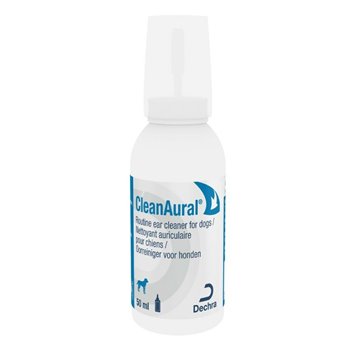
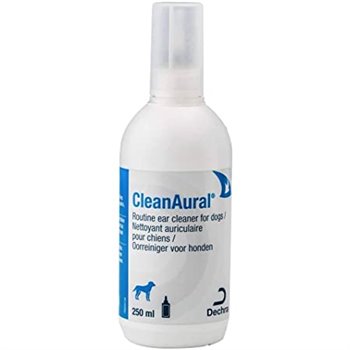
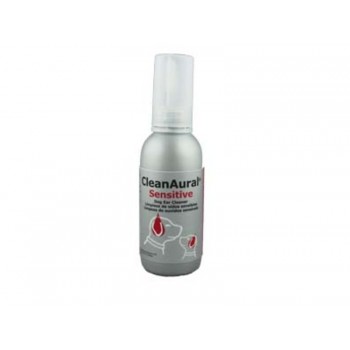
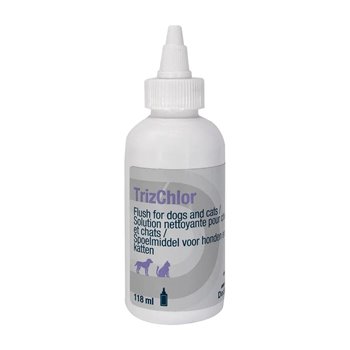
TrizCHLOR Flush is a veterinarian-recommended ear flush to treat and prevent ear infections in dogs. Formulated with tromethamine, edetate disodium dihydrate, and chlorhexidine, TrizCHLOR Flush is safe to use while cleaning the ear and helping your pet’s ears get clear of bacterial and fungal infections.
If you’re looking for an effective treatment for bacterial otitis (ear infections), look no further than TRIZCHLOR. The formula contains a powerful blend of Tromethamine (Tris) USP, Edetate Disodium Dihydrate (EDTA) USP and Chlorhexidine Cluconate buffered to pH 8 with Tromethamine HCL that helps eliminate troublesome ear infections quickly and efficiently.
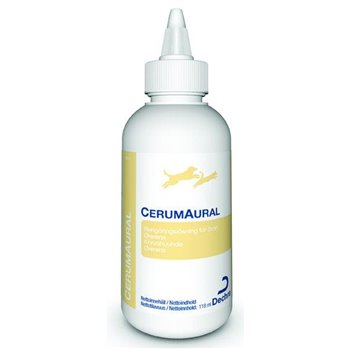
Cerum Aural Ear cleaner is a specially formulated solution designed to clean both healthy and infected ears and maintain them in good condition. Cerum Aural flush is strong enough to rapidly soften and dissolve hardened wax and debris yet gentle enough for regular use (neutral pH). 118ml
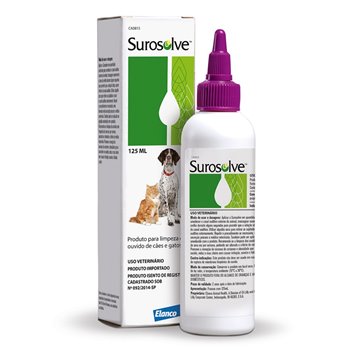
Surosolve Ear Cleaner is a non-irritating ear cleaner especially crafted to keep the ears of your pets hygienically clean. Surosolve works through an antibacterial flush and an antibiotic potentiating agent. This dual-action ensures that not only is the ear cleaned, but the normal microbiological balance of the ear canal is also restored. This is crucial for animals with dirty or smelly ears and for routine cleaning to reduce the risk of ear problems developing.
Dogs and cats have a more profound and winding ear canal than humans, making them more susceptible to ear infections, wax build-up, and other related problems. Regular cleaning with Surosolve can prevent these issues, ensuring that your pet remains comfortable and free from potential pain or irritation. Surosolve for dogs and cats is a product designed to address this need effectively.
Dirty ears can become a breeding ground for bacteria and yeast, leading to infections that can be painful and, in severe cases, lead to hearing loss. Surosolve for dogs and cats offers a proactive approach to ear health, ensuring that potential problems are addressed before they become severe.